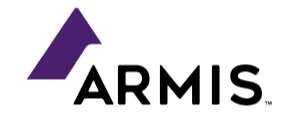AVAILABLE 24x7
888.662.2724
AVAILABLE 24x7
(888) 66CARAH
Fast & Accurate
Request A Quote
Quick Response
Chat With Us
̽����Ƶ, in conjunction with its vendor partners, sponsors hundreds of events each year, ranging from webcasts and tradeshows to executive roundtables and technology forums.
Government Events and Resources
Events
Archived Events

Gigamon Virtual Event
Event Date: February 07, 2024
Hosted By: Gigamon & ̽����Ƶ
Hosted By: Gigamon & ̽����Ƶ
Threat actors conceal lateral movement and data extraction within encrypted communications, making it incredibly difficult to detect when they are present. Gigamon Precryption™ technology is a breakthrough approach to increasing network ...

Gigamon Virtual Event
Event Date: December 19, 2023
Hosted By: Gigamon & ̽����Ƶ
Hosted By: Gigamon & ̽����Ƶ
One of the challenges facing public sector organizations, such as U.S. and international government agencies, is the inability to carry IT gear from one place to another to ensure security and compliance. Many of these organizations have ...

Gigamon Virtual Event
Event Date: November 30, 2023
Hosted By: Gigamon & ̽����Ƶ
Hosted By: Gigamon & ̽����Ƶ
The Zero Trust journey needs to start with a sound strategy. Regardless of which Zero Trust model you are utilizing, there are some universal solutions that will be common amongst them. Threat actors are observed using the same tactics and ...

Multi-Vendor Virtual Event
Event Date: November 02, 2023
Hosted By: Gigamon, Sumo Logic & ̽����Ƶ
Hosted By: Gigamon, Sumo Logic & ̽����Ƶ
Modernizing applications and migrating to public cloud platforms enhance agility and flexibility. But there are also trade-offs to consider, including new and borderless attack surfaces, lack of consistent visibility, and growing tool sprawl ...

Multi-Vendor Virtual Event
Event Date: October 17, 2023
Hosted By: Gigamon, Armis & ̽����Ƶ
Hosted By: Gigamon, Armis & ̽����Ƶ
When most people think about connected devices, they think smartphones or tablets, but that's just the tip of the iceberg. All kinds of smart devices and sensors are connected to your network. Protecting your network isn't easy, but it's made more challenging when you don't have ...

Multi-Vendor Onsite Event
Event Date: October 12, 2023
Hosted By: Armis, Gigamon & ̽����Ƶ
Hosted By: Armis, Gigamon & ̽����Ƶ
Armis, Gigamon and ̽����Ƶ completed a hands-on experience in the Armis platform, which will help you understand the ease of use, simplicity, and business value for your organization when responding to critical cyber incidents.
The session dove into the intersection of Operational Technology (OT), ...

Gigamon Virtual Event
Event Date: May 31, 2023
Hosted By: Gigamon & ̽����Ƶ
Hosted By: Gigamon & ̽����Ƶ
Network blind spots prevent Zero Trust deployment from being successful due to the lack of visibility into network telemetry. As the network grows and evolves, this pain will worsen if not addressed at the foundational ...

Multi-Vendor Virtual Event
Event Date: March 21, 2023
Hosted By: LiveAction, Gigamon & ̽����Ƶ
Hosted By: LiveAction, Gigamon & ̽����Ƶ
̽����Ƶ invited LiveAction CTO and Founder John Smith, and Gigamon Senior Sales Engineer Matt Hollingsworth, for a joint webinar on March 21st at 2pm EST where attendees learned:
White House Executive Order and Memorandums on Zero Trust and OMB M-21-31
Definition of Zero Trust and its ...

Gigamon Virtual Event
Event Date: October 25, 2022
Hosted By: Gigamon & ̽����Ƶ
Hosted By: Gigamon & ̽����Ƶ
Cloud service providers adhere to a shared security responsibility model. This means that customer security teams maintain some responsibilities for security as they move applications, data, containers, and workloads to the cloud, while the provider takes some responsibility, but not all.

When DOD rolled out its Cybersecurity Maturity Model Certification program in 2020, it was designed to secure the Controlled Unclassified Information (CUI) in systems used by contractors in Defense Industrial Base that support business and warfighting efforts. Initially, an independent accreditation body was to certify a ...
